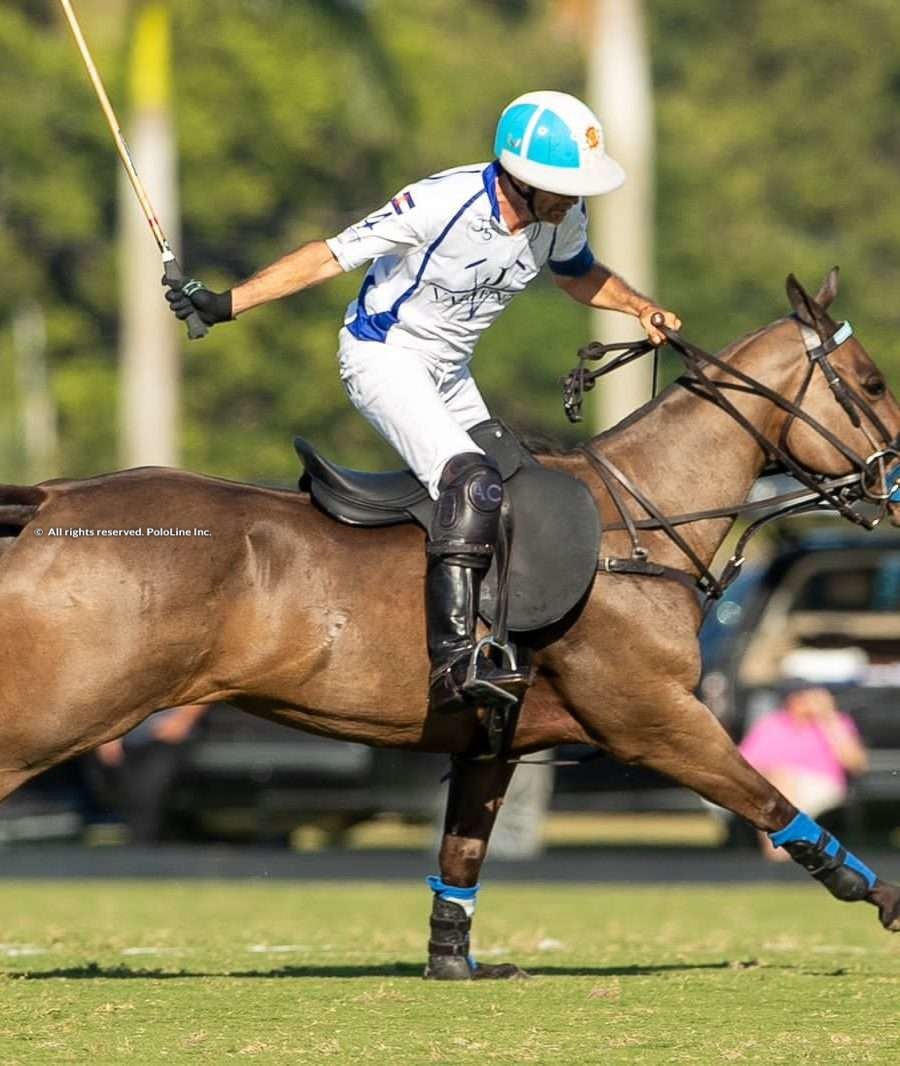By Prof. Eduardo Amaya / Special thanks to Raúl Laplacette for his invaluable cooperation
The swing is defined as a rocking movement between the shoulders and hips. This bodily action allows for a greater impact or impulse on the ball with the least energy expenditure. There must be muscular coordination and the
use of strong muscle masses, all arranged on the platforms (stirrups). Each strike has its position on the stirrups that ensures its success.
In the case of the drive or forward strike, the support, beginning of the coupling of joint segments (kinetic chain), will be on the right stirrup, then will ascend through the ankle, calf, knee, up to the right hip, and continue through the shoulder, arm, and hand. The distance to the ball is calibrated with the hip and knee flexion maintaining what I call the golden triangle: Hip-Knee-Heel.
After impacting the ball, during the follow-through phase of the swing, the hips and shoulders rotate counterclockwise with the spine as the axis, achieving the “torque” effect. It is crucial not to flex the torso to
contact the ball, bending down to make that contact, as we will lose the swinging motion between the waist and shoulders.
To achieve an exact destination for the ball, we base the swing’s development on three planes:
Sagittal or parallel to the horse:
1) Counterclockwise rotation of hips and shoulders. The left shoulder points to
the target, and the mallet is positioned opposite to that shoulder at the
top of the swing.
2) Horizontal:
It is precisely the ground, the distance between the hand and the ball. This distance is acquired by flexing the knee (calibration) as in all sports (tennis, golf, hockey, etc).
3) Perpendicular:
It is the timing, momentum of contact with the ball, whether forward, just right, or delayed. It will depend on the distance to the ball, the speed of our horse, and the swing’s speed.
These three planes must be joined on an axis, which is precisely the mallet.
For a successful strike, a good swing is needed; for this purpose, we need good support in the stirrups and to position ourselves correctly unconsciously, i.e., based on our muscle memory. Bending the body to contact
the ball loses distance and accuracy of the strike, and we can only perform the arm movement.
All this occurs when the stirrups (platform) are not used correctly. Power is achieved by harnessing the kinetic energy generated in the stirrups, especially on the side of the strike. This power will be directly related to
the speed acquired at the moment of contact with the ball.
The success of a strike, efficient in distance and direction, will depend on the perfection with which the swing is made in each of the three planes. A relaxed backswing, the correct position of the mallet at the moment of impact, and an appropriate follow-through will help us achieve the goal.
